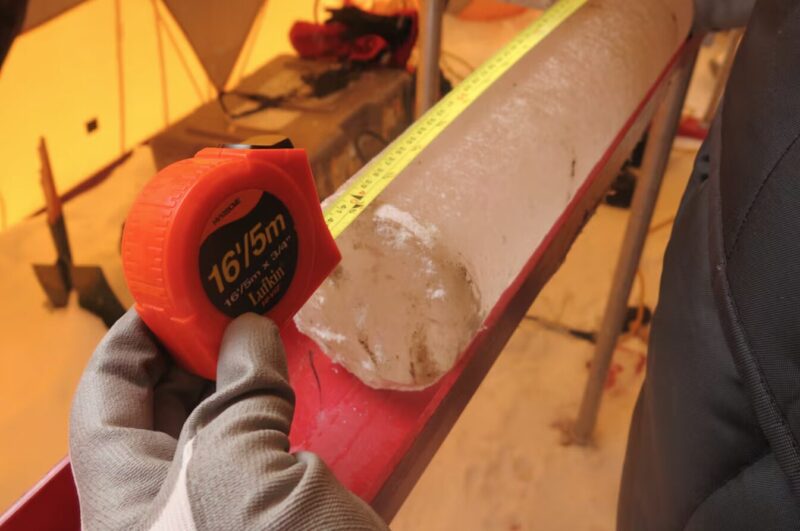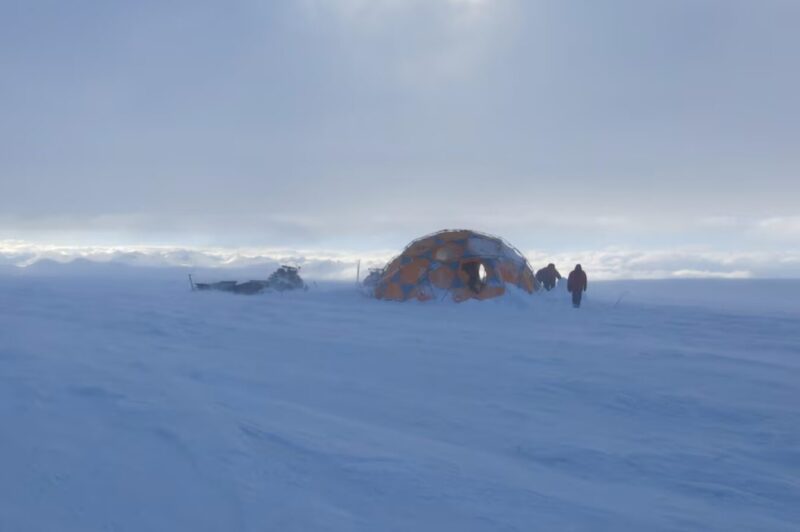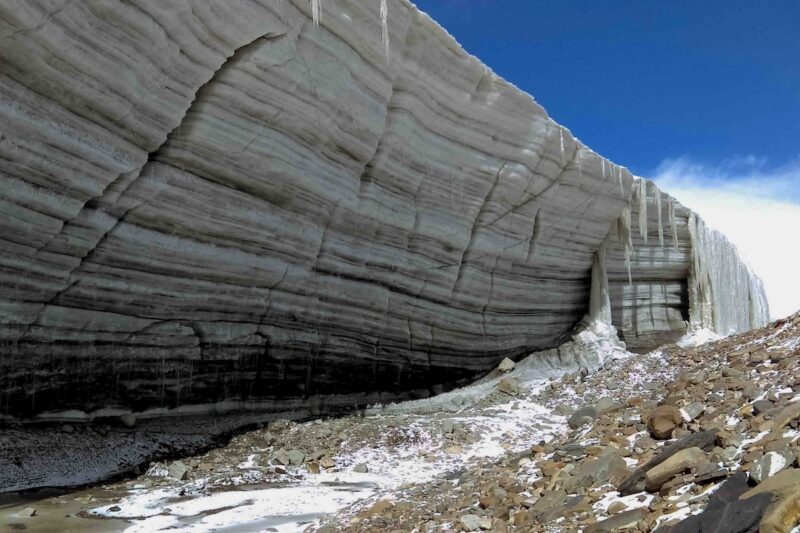Ice samples from the Guliya Glacier on the Tibetan Plateau contained over 1,700 never-before-seen viruses.
The discovery of new viruses often sends people into a panic. Could one of them cause a new pandemic? Thankfully, these bacteria-eating viruses do not pose a threat to humans or any other animals.
“Glaciers represent some of the cleanest environments on Earth,” Lonnie Thompson, co-author of a new study, commented. “[We] routinely drink meltwater from these glaciers when we are drilling the ice cores.”
An international team of scientists drilled ice cores from the Himalayan permafrost in 2015. Ground frozen for millennia has started to thaw, and all the historical information within them will soon be lost. So the race is on to collect as many samples as possible before these frozen time capsules melt away.
Collecting the ice cores is not easy. A 2015 expedition needed 60 people to gather the samples at the center of this study. First, they hiked to the arid Guliya plateau, 6,000m up. They then drilled 300m down into the ice and extracted the cores. They later cut these into one-meter-long sections.

One of the ice cores. Photo: Lonnie Thompson
Ice carried by yak back
The hardest part is transporting the frozen cores after extraction. An entire herd of yaks initially carried the cores, which were then transferred onto refrigerated trucks and planes. For the whole journey from Tibet to Ohio, the cores had to stay frozen and free of contamination from modern-day viruses.
The team identified 50 times more viral information than from any previous glaciers. The 1,705 viruses belonged to nine separate time periods. All were bacteriophages — viruses that only infect bacteria. They have shown researchers how viruses have evolved over 41,000 years. A staggering 97% of them were completely new to science.

The 2015 core drilling site. Photo: Lonnie Thompson
The study looks at how viruses evolve in a changing climate. The 41,000 years featured three major cold-to-warm cycles. The viruses that form during colder and warmer periods vary significantly.
One group evolved, for example, at the end of the last ice age, 11,500 years ago. This suggests there is a clear link between climatic change and virus evolution. The genetic signatures of some viruses overlap with those of known organisms across the globe.
“That means some of them were potentially transported from areas like the Middle East or even the Arctic,” said lead author ZhiPing Zhong.






